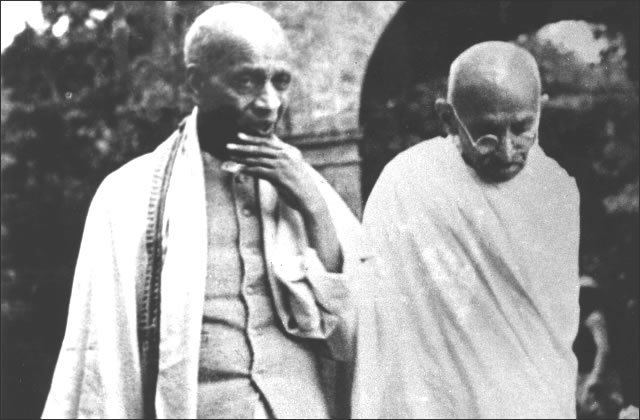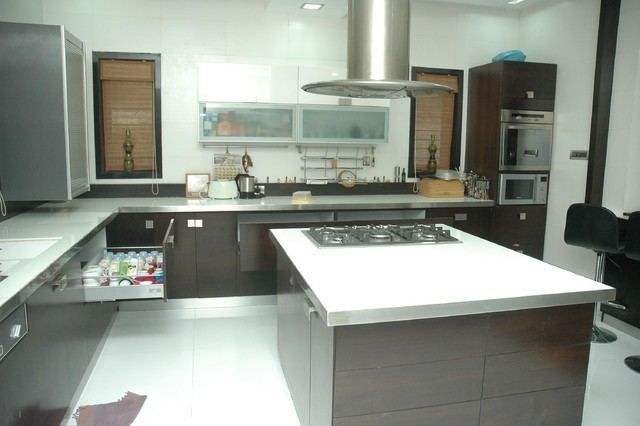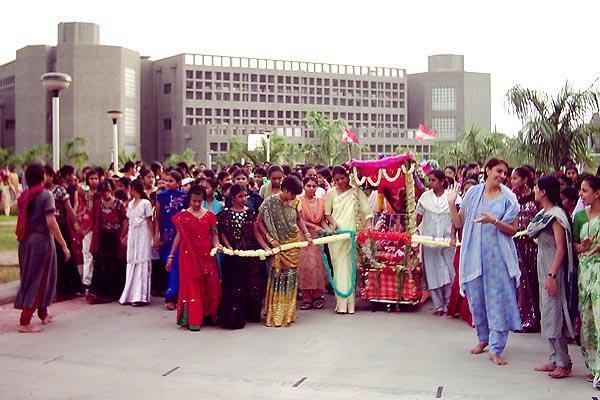Country University Pramukhswami Medical College Languages spoken Gujarati, Hindi | State | |
Karamsad is a city and a municipality in Anand district in the Indian state of Gujarat. It is part of the Chhagaam Gol ("Circle of Six Villages").
Contents
- Map of Karamsad
- Shree krishna hospitalcharutar arogya mandal karamsad
- History
- History of Charotar history of Patel Patidar
- Geography
- Culture
- References
Map of Karamsad
Sardar Vallabhbhai Patel, one of Indias greatest leaders in the Indian Independence Movement grew up in Karamsad. It was also the home of his elder brother Vithalbhai Patel, who was also an important political leader. The Patel brothers lived with their two elder brothers and one younger brother and sister, and parents Jhaverbhai and Ladba Patel in a mud-brick house adjacent to his familys farm holdings. This house is preserved to date as a memorial to Patel.
Shree krishna hospitalcharutar arogya mandal karamsad
History

The date of establishment of Karamsad is not exactly known, but during the era of Kumarpal i.e., in 1155 AD, the village consisted mainly of people from Koli tribes. This community lacked proper agricultural skills. Because of this, they used to rob, steal or work as servants if opportunity permitted.

In 1211, Aja Patel, originally from Hilod (a town near Adalaj), came over and settled here. Because of his skills, agricultural production increased and the village prospered.
The details henceforth from Aja Patel to Kupa Patel are not available, however Kupa Patel was from the twelfth or fourteenth generation of Aja Patel. Kupa Patel was an ardent devotee of Lord Shiva. He had got Lord Shivas temple renovated, which was in ruins and situated in the western side of the village. That was well built by his son Lakha Patel. He had also helped build a lake in the village.
Devidas, a few generations down had two sons. Jibhai and Bajibhai. His sons asked the Moghul Governor of Ahmedabad Province to let them keep Karamsad for revenue collection. Out of them, Majibhais four sons and their descendants got themselves distributed in six different Khadkis (street or lane before a group of two or more houses with a common gate) in Karamsad.
Six different Khadkis were formed in Karamsad after the six descendents of Mahijibhai.
- Bhayni Khadki (Gokaldas)
- Bapani Khadki (Govendas)
- Hathibhaini Khadki (Sunderdas)
- Motabhaini Khadki (Jivabhai)
- Jini Khadki (Bhavijibhai)
- Chhatthi Khadki (Laljibhai)
Another popular story goes like this - the original owner of the village was a Rajput. Mahijibhai Patel of the Uvarsad village, near Ahmedabad came and settled here. The Rajput community of the village did not like the arrival of Mahijibhai. They killed two of his six sons. Both of his brothers had actually gone to the Petlad court, where a case was filed against the Rajput community by Mahijibhais sons. On their way back, they were killed by the Rajputs near Sandesar, where afterwards memorial pillars were built in their name. Today there are hardly any Rajputs in Karamsad. After the Patidars occupied most of the land in Karamsad, the Rajputs left and settled down in Napa village.
The original Patidars of Karamsad were physically very strong. They were known for their endurance and their ability to bear torture. One of Mahijibhais sons suffered from a carbuncle. (A carbuncle is when a particular part of the body becomes gangrenous). During that time, antibiotics were not available, so the only way to treat it was to cauterize that part. The local method at that time was by heating an iron rod and applying it over the affected part instantly. During this, the person would lose all his calm and nerves. At that time, this procedure would involve 3-4 people tightly holding the patient. One of the Rajput in Napa village was known to do this procedure. However that son was brave, so when Mahjibhais son was taken over there he said, "Nobody should hold me. I do not need any support. Nothing is going to happen to me."
The Rajput performing this procedure had kept the old rivalry between them in mind. So he overheated the iron rod and put it over the affected part with great vengeance. Mahijibhais son bore it without uttering a single word. When the Rajput praised him for his enduring power, Mahijibhais son said, "Do not praise me. I am nothing in comparison to my other brothers. Their endurance power is a lot greater than mine."
After this incident, the Rajput community in Napa village came to know about the strength of the Patidar community and they stopped creating trouble in and around Karamsad. When Sardar Vallabhbhai Patel was staying at Nadiad, which was his maternal native, he had suffered from Bubo (an inflammatory swelling of a lymph gland) of the armpit. He had also got it cauterized without uttering a single word. After all he was also from Karamsad.
During the making of Vallabh Vidyanagar, if the Patidars of Karamsad had not donated generously, then Vidyanagar would not have looked like what it looks today.
Karamsad has been quite under the influence of Swaminarayan Sect and Santram Temple for a long time. Both these sects do a lot of activities in Karamsad. Karamsad has always remained way ahead, be it in politics, education, religion, cooperative activities or industries in the Kheda District. The Patidars of Karamsad are well known in the social community of Chha Gam (six villages). The yesterday’s generation of Patidars have proved best themselves in different fields in Africa, Fiji, Myanmar (Burma), etc. the first two Patidars to reach East Africa in 1895 AD. were Maganbhai Naranbhai and Ishwarbhai Nathabhai Patel. Today the Patidars of Karamsad are spread out in England, Canada, America and Australia.
Santram Temple in Karamsad is famous for its Convention Hall / Banquet Hall. The temple also provides health services to the people at a very nominal charge. It also runs coaching classes for students. Lots of students after getting coaching from these classes have got admissions in various engineering and medical colleges. A temple of Goddess Khodiyar – the presiding deity of Patidars has been recently built. It is also has various facilities and a big banquet hall, which can be used for marriage ceremonies. There are very few Digambar Jain Temples in the whole of Gujarat, but still there is a temple (Derasar) in Karamsad. Moreover there is a Swaminarayan Temple, Bapeshwar Mahadev, Catholic Mission, Mosque etc.
Karamsad is situated at 220 North latitude and 720 East longitude. It has a population of 14,000 people and has water works also, but in the past, people used to get water from different wells like Kharo Kuvo, Lakhvo Kuvo, Rabari No Kuvo, Moto Kuvo etc.
History of Charotar – history of Patel-Patidar
Charotar Patel is renowned community in the world. You will find Patel surname each corner of the world, only in UK top 500 British surnames, Patel comes 20th, In Leicester Patel comes 1st, Wolverhampton comes 3rd and London comes 3rd. 1,23,452 Patidar living in Great Britain itself. There are more interesting statistics on surname Patel in Great Britain. They are spread all over the world. They have travel a lot not just by air or sea. They have got this technique from their roots (Aryans). They have earn pride and popularity. History is the witness of their success.
The people from India living outside the country called NRI (non residential Indian). There are about 25 million NRIs/PIOs worldwide (estimates vary between 25 to over 30 million).
Patidars of Gujarat are the descendants of Aryans. Aryans were settled on the Pamirs High Lands near River AMU in Central Asia. They were moved in three different group over the time towards achieve success to keep their existence. From these Aryans, one group went towards Europe, another group moved to Iran and last group of Aaryans came to Punjab, India via Afghanistan. Around 250 B.C. a social order came into existence amongst Aryans with four classes (Chatur Varnya) namely (1) Brahmin (2) Kshtriya (3) Vaishya and (4) Shudra. In the beginning, while these classes were in the process of being established, the present Patidars were Kshtriyas and settled in Punjab. Thereafter, Kshtriyas were further subdivided into three kinds known as (1) Rajan-Raj (2) Kshtriya (3) Kurmi-Kshtriya. Rajan were the leaders of several small groups and were called Kings. Kshtriyas work was to fight the battles, engage in.war and help the kings in administration all the year round. Kurmi Kshtriyas were helping in war with the enemy or invasion from outside but in peace time were doing agriculture in the fertile region of Seven Rivers Valley-Sapt Sindhu together with animal husbandry on a large scale.
During the period between 400 A.D, to 700 A.D. many Lauva Patidar Families (Loh - Kurmis) of North India, Rajasthan and North Gujarat came and settled in Adalaj. When Siddhraj con¬ quered Malva Desh, he invited thousands of Kanbi families to Patana. Ramji Patel brought with him some six hundred Patidar families and settled in Adalaj. This is how Adalaj became the first main settlement of Lauva Patidars in Gujarat. From 500 A.D. Patidars of Adalaj spread to Bhal, Dashkoi and Khambat Regions and in the sixth century further form Khambat, spread all over Kaira District. During this period Ramji Patel accompanying so many Kurmi families from Adalaj went to Charotar Region. These Kurmi families broke the wild virgin land of Charotar, ploughed it and made-arable and most fertile and there settled permanently carrying on agriculture. From 1430 A.D. the down fall of Champaner began and from thereon Patidars of Champaner reached right up to Valsad via Vadodara. Few went to Kanam-Vakar Region.
In Gujarat, the word Patel is 300 years old. During this period, there was one Patel named Vir Vasandas from Piplav (Dist. Kaira) who used to have good relation with the Moghul Emperor Aurangzeb. He organised the Conference of the entire Kanbi Community in 1759 (1703 A.D.) under the auspices of Bahadur Shah a Shajada of Aurangzeb and in this gathering persuaded him to enter the word "Patidar" instead of "Kanbi" in Badshahs Revenue Records. Patidar means one who has the land. Thereafter, he influenced Moghul Emperor in Delhi and Moghul Subah (Governor) of Gujarat to authorise Patidars to collect Land Revenue. The Patidars who were given this authority were called "Amin", while during the reign of Peshwas those author ised to collect the Revenue were called "Desai". Like wise amongst Patidars in addition to surname Patel there began surnames like Amin and Desai. Vir Vasandas was the first Amin of Gujarat.
Five hundred years ago all the Patidars were farmers, all were equal and no body was of higher or lower class (Kul-Family). There were no classes, circles or groups in give and take of girls in marriage. All the Patidars, Kadva as well as Lauva according to their convenience were arranging girls marriages in whole of Gujarat. Ahmedabad City was founded in 1413 A.D. Prosperous and educated Patidars from villages went to Ahmedabad and started setting there. Over the course of years Patidars of Ahmedabad City became wealthy and prosperous and therefore being counted as of Higher Social Strata and Family (Kul). Patidar farmers from villages rushed to the City in search of suitable Boys to give their daughters in marriage resulting into a competition and an emergence of a Custom of Dowry and Dahej (Matrimonial property to the Girl in marriage). The farmers from the villages had to incur heavy expenditure as a result of which the birth of a girl was considered to be a bad Omen. At last, Village Patidars awoke and around 1700 A.D. only Lauva Patidars decided not to give in marriage their daughters in Ahmedabad. But during the same period one inequality arose i.e. some big families of the villages received Grants of Aminat and Desaigiri resulting in a big increase in their income. A wealthy and prosperous class came into existence with whom in turn, the ordinary villagers rushed and compete to give their daughter in marriage. The amount of Dowry and Dahej (Matrimonial property including Jewellery, Clothes & wherewithal) gradually increased. After 1800 A.D. those villages which were considered to be of Higher Social strata and of noble families (Kulvan) ceased to give their daughters in marriage outside their certain villages and which over the period established as a Custom.
Thus created a big inequality in give and take of girls in marriage and in fact in 1869 A.D. Nadiad, Karamsad, Vaso, Sojitra and other fifteen villages created their own Circle (Gor). In 1888 Patidar Panch met in Dakor with 10,000 representatives present. This panch made a tremendous effort to remove the said inequality but Patidars could not agree amongst themselves. As a result the Circle (Gor) created some 20 years back by Nadiad, Karamsad etc. was firmly established and also thereafter, other two Circles (Gor) were created. Following in another twenty years some fifty large and small Circles (Gors) of Lauva - Patidars were created in Gujarat . It is said that the size of Patidars Heart in comparison with other Gujaratis is bit bigger but his tongue is more sharper and with that kind of nature both good and bad results have come. Today Karamsad have become green Karamsad by the help of Mahesh Patel (Param Associates), who have grown more than 2000 trees in whole village.
Geography

Karamsad is located at 22.55°N 72.9°E? / 22.55; 72.9. It has an average elevation of 35 metres (114 feet).

Karamsad Weather.http://weather.weatherbug.com/India/Karamsad-weather.html?zcode=z5602. Kiran Patel (Tooting-London)
Karamsad Map:http://wikimapia.org./#lat=22.542565&lon=72.9019797&z=18&l=0&m=b Kiran Patel.(Tooting-London)
Culture
Karamsad is hometown to a large (& growing) number of non resident Indians (NRIs) Not only do they contribute to the development of the charotar region, they are also instrumental in creating & financing a lot of institutes.

In addition to NRIs, the local farming community is also very socially active The major product of the region is tobacco. Travelling in the bylanes one is constantly reminded of this by the peculiar smell that pervades, almost like that of empty cigarette packs.
